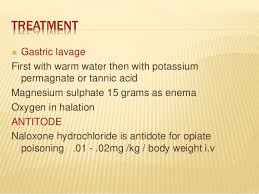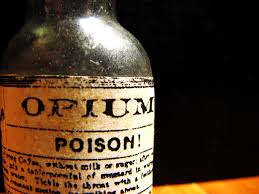Opium is the dried latex obtained from the opium poppy.

Signs and symptoms:
Despite their inherent differences in origin, opiate and opioid symptoms are often interchangeable. When thinking of either, the first thing that should come to mind is breathing. Opiates suppress proper inhalation and exhalation above all else. Another fundamental symptom traces its roots to the intended functionality of the drugs: sleepiness. In a clinical setting, controlled amounts of morphine and similar drugs tend to increase drowsiness. Taking this side effect to its extreme, it is easy to understand why enhanced lethargy is a symptom one should be cognizant of. Such a reaction can lead to a coma and, at its absolute worst, death.
Knowing when a recreational experience with opiates is devolving into an emergency could save a life. Perceptible warning signs of an opiate overdose include:
Nausea: may include vomiting, dry heaving and gurgling noises
Delirium: confusion or slurred words, if they are capable of speech
Limpness: motor functions may cease entirely
Cyanosis: distinctive purple, red, or even blue skin, fingernails and lips
Mood Swings: these can be mild or severe, with individuals displaying joy one minute and fury the next
Moreover, three pervasive signs are commonplace during an opiate overdose: unconsciousness, contracted pupils, and respiratory depression. Collectively, this is called the ‘opioid overdose triad’ and using it during an overdose triage situation is imperative. Note: there is no catch-all when it comes to overdose signs. Any single sign could be indicative of an overdose. Just because multiple signs do not present themselves doesn’t mean the scenario is any less dire. When lives are at stake, assuming the worst is good — it means an individual can receive the best possible outcome if treatment is needed after all.
Treatment:
Suspected opiate overdoses should be treated by qualified medical professionals. There is no alternative to swift and effective care. However, there are steps that can be taken when an overdose is suspected to prolong life and make medical intervention more likely. As always, dialing helpline is the first step to any emergency, overdose or otherwise. Once first responders are contacted, one must determine whether the victim is specifically experiencing opioid or opiate overdose as opposed to another type of drug. Luckily, both opioid and opiate overdoses can be halted by the drug naloxone (Narcan). This anti-overdose compound is a stabilizer of sorts; it won’t cure or treat the overdose, but it will provide victims crucial time to seek proper treatment. Naloxone is often considered a blessing and a curse. In the moment, it is undeniable that the drug saves lives. That is not to say it doesn’t come with its repercussions. Many opiate overdose victims find life after naloxone injection to be a living Hell, due to debilitating withdrawal-like symptoms. For many, this can lead to a stronger urge to use opiates in the future. With opiate addiction currently at its highest point, it is problems like these that society will have to face more and more in the years to come. But, any life saved from the overdose epidemic today is another opportunity to fight the epidemic tomorrow.







